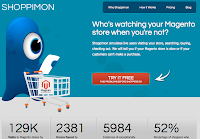 |
| Webinar Promotion Checklist |
If you put so much effort into your B2B webinar production, you better make sure you're doing the most to promote your webinars.
I recently compiled a list of 20 things you should consider doing to promote your next webinar - here's a summary (the full information is in the beautifully designed Webinar Promotion Checklist, which you can download from the Leadspace web site):
- Create a title that stands out and attracts just your target audience
- Write a compelling, search optimized abstract
- Post the webinar on your website
- Write a news release about the webinar
- Tweet about the event several times with the right hashtags
- Write a blog post about the webinar and any associated offers
- Work the relevant social networks with a focus on LinkedIn
- Create a LinkedIn event
- Create a Facebook event
- Post in member-only business community sites
- Promote the webinar in event listings
- Share a webinar trailer on YouTube
- Post several slides as teaser
- Run a telemarketing or inside sales call campaign
- Add a webinar registration link to company's standard email signature
- Email your house list
- Run an online ad campaign
- Use your current webinar to promote your next one
- Use local event services
- Leverage your guest speakers for promotion
The details and some useful links are all in the checklist document which you can download here (or drop me a note and I'll gladly email it to you, if you hate filling out forms).





















